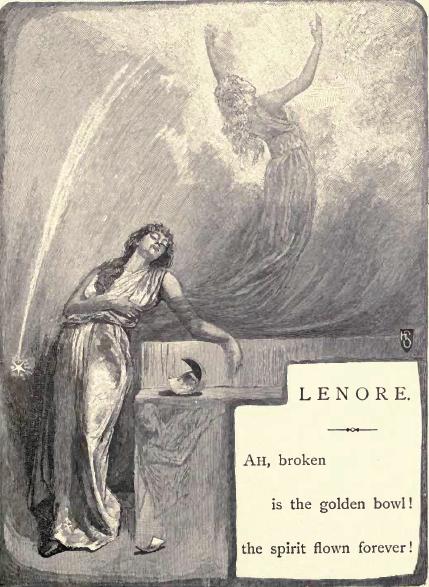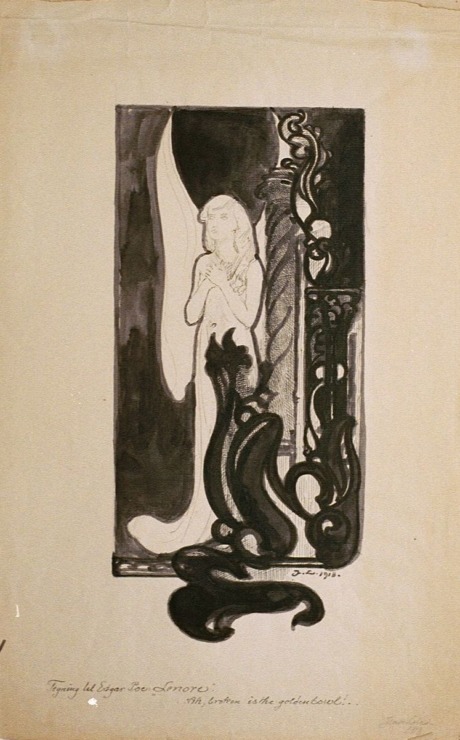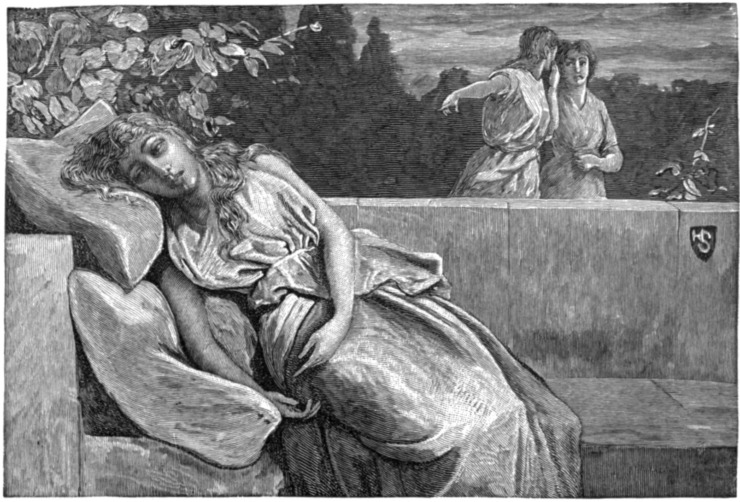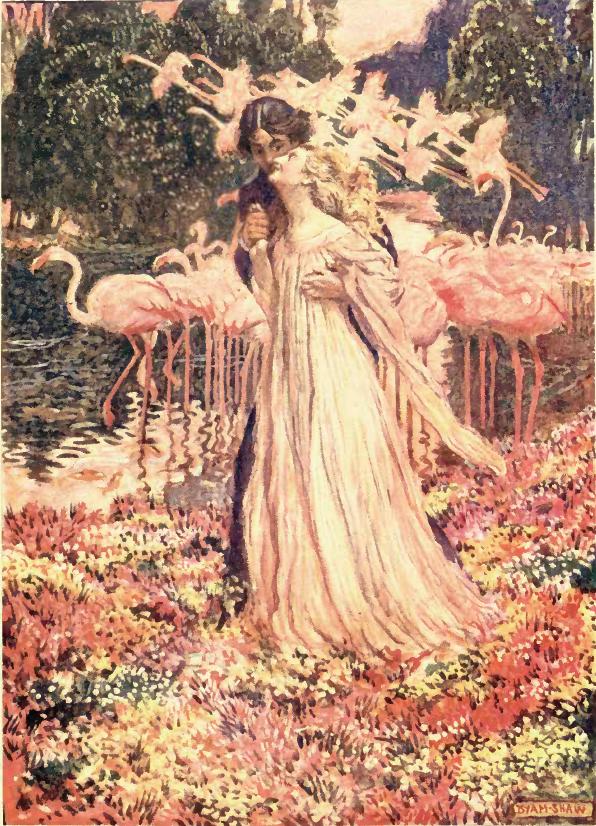< Return to Edgar Allan Poe Poems
Lenore
Ah, broken is the golden bowl! the spirit flown forever!
Let the bell toll!—a saintly soul floats on the Stygian river.
And, Guy de Vere, hast thou no tear?—weep now or never more!
See! on yon drear and rigid bier low lies thy love, Lenore!
Come! let the burial rite be read—the funeral song be sung!—
An anthem for the queenliest dead that ever died so young—
A dirge for her, the doubly dead in that she died so young.
“Wretches! ye loved her for her wealth and hated her for her pride,
And when she fell in feeble health, ye blessed her—that she died!
How shall the ritual, then, be read?—the requiem how be sung
By you—by yours, the evil eye,—by yours, the slanderous tongue
That did to death the innocence that died, and died so young?”
Peccavimus; but rave not thus! and let a Sabbath song
Go up to God so solemnly the dead may feel no wrong!
The sweet Lenore hath “gone before,” with Hope, that flew beside,
Leaving thee wild for the dear child that should have been thy bride—
For her, the fair and débonnaire, that now so lowly lies,
The life upon her yellow hair but not within her eyes—
The life still there, upon her hair—the death upon her eyes.
“Avaunt! to-night my heart is light. No dirge will I upraise,
But waft the angel on her flight with a pæan of old days!
Let no bell toll!—lest her sweet soul, amid its hallowed mirth,
Should catch the note, as it doth float up from the damned Earth.
To friends above, from fiends below, the indignant ghost is riven—
From Hell unto a high estate far up within the Heaven—
From grief and groan to a golden throne beside the King of Heaven.”
—Edgar Allan Poe
Enjoy Artistic Representations of “Lenore” by Edgar Allan Poe

Illustration by Henry Sandham for Poe’s poem Lenore for an 1886 edition of the poem

Jens Lunds’s illustration for Edgar Poe’s Lenore, 1918.

Pg 29 in an 1885 publication of Edgar Allan Poe’s Lenore.

Byam Shaw’s illustration for Poe’s Eleonora in “Selected Tales of Mystery”, 1909.
Listen to Readings of “Lenore”
Listen to Musical Interpretations of “Lenore” by Edgar Allan Poe
That’s it for readings of Lenore by Edgar Allan Poe!
About Edgar Allan Poe
Edgar Allan Poe (1809-1849) published his first collection of poems, Tamarlane, and Other Poems, in 1827, when he was 18 years old. A tendency to run up debts (including for gambling) kept him in constant state of reinvention – college student, poet, short story writer, soldier/officer school, literary journal editor and critic.
The Poe who arises from Symons’ hand (his biographer in The Telltale Heart: The Life and Works of Edgar Allan Poe) is a man who first and foremost was determined to put Southern letters on the map, aiming to wrest control from the literary establishment in New York and New England (Poe aimed some rather pointed arrows at writers like Henry Wadsworth Longfellow). For his own writing, he wanted to be considered a poet. The poems were the important works; the stories were almost after-thoughts, almost dashed off primarily to raise funds. And he always needed money.
His personal life seemed to have stayed a general mess, but he had an enormous impact on both American and world literature. Consider the stories and poems that have been filmed, published, re-published, anthologized, celebrated and widely admired for more than 150 years: “Murders in the Rue Morgue,” “Fall of the House of Usher,” The Raven, “The Tell-Tale Heart,” Annabel Lee, “The Bells,” “Ulalame,” “To Helen.”
We associate Edgar Allan Poe with 19th century gothic. His stories are full of mystery, passion, horror, violence, death, and the supernatural. And yet his poems, especially “The Raven” and “Annabel Lee,” made him famous in pre-Civil War America and established his literary reputation.
Questions and mystery surrounded Poe’s own life and death, and continue even today – we may never know who left three roses and a bottle of cognac on his grave in Baltimore for decades until 2011 (alas, the “Poe Toaster” disappeared or died, to be seen nevermore).
You can read more about Poe’s biography in the articles Poets and Poems: Meeting Edgar Allan Poe and Forgotten Classics, The Telltale Heart by Julian Symons by Glynn Young, from which this biography was compiled.
I hope you enjoyed Lenore by Edgar Allan Poe!
BUY ‘HOW TO WRITE A FORM POEM’ NOW!
